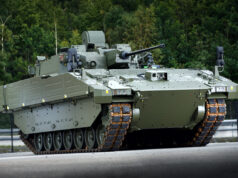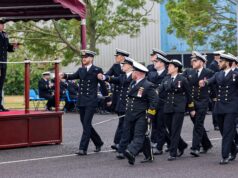A rare multinational amphibious battalion has showcased NATO interoperability and engineering capability by establishing a series of military ferries across the River Rhine, Europe’s busiest commercial waterway.
Exercise Grand Crossing, held in Germany, brought together more than 1,200 soldiers and hundreds of vehicles. At its heart was the British-German 130 Amphibious Engineering Battalion, the only unit of its kind in Europe. Operating as a niche capability within NATO, the battalion worked alongside Italian and Dutch engineers to demonstrate the full operational potential of its river-crossing systems.
Troops began at the battalion’s base in Minden before deploying to Sennelager Training Area to carry out combat engineering preparations. The final phase involved a tactical road march to Rees on the Rhine. This leg replicated the logistics and coordination required for a real-world deployment, including refuelling convoys and integrating allied units.
The central piece of equipment was the M3 Rig, a modular amphibious platform capable of forming bridges or acting as standalone ferries for heavy military equipment such as main battle tanks. British soldiers from 23 Amphibious Engineer Squadron RE deployed 14 of these rigs, manoeuvring them in sequence to construct functional ferries on the water.
Sapper Sheldon Busby described the experience as a defining moment in his Army career. “It’s an amazing opportunity to have. Being on the water, controlling the ferries and bridges. When I joined the Army, I thought it would be the infantry. Then I got the opportunity for amphibious stuff. I’m living it here right now.”
The challenge was far from theoretical. Transporting armoured vehicles across a wide, fast-flowing, and commercially busy river required rigorous coordination and high levels of technical skill.
Italian and Dutch engineers added to the effort by assembling floatable pontoon crossings further upstream. The outcome was a live demonstration of plug-and-play allied engineering, reinforcing NATO’s ability to respond together to real-time demands.
“It’s a fantastic opportunity for all my soldiers in 23 Amphibious Engineer Squadron RE because we get to work with a different nation, learn from their experience and effectively be better together,” said Major Ryan Ingram RE.
With the River Rhine representing a significant natural barrier, 130 Battalion’s successful operation reaffirmed the military value of combined amphibious engineering units. The exercise also underscored a broader principle: complex challenges are more manageable when allies train and operate side by side.














Child’s play! 17 June 1979 28 AER BRIDGED the Rhine with 21 M2 rigs in 49 minutes👍😀
I was waiting to see if you would post mate.
😂it was while we were on bridge camp,the Rhine was actually closed to traffic while we done it! It was a Sunday but it made headlines in Germany at the time! The rigs in the middle had to be at full power to even hold against the current it was that strong!
I recall it was rare to use the Rhine?
The river Weser seems to stick in my memory when 28 was at Hameln.
It was a one off the only time it was done since WW2 IIRC,it was a big thing to shut the Rhine it’s like a water motorway with barges and even small ships going up and down all the time😀
Your right about the Weser that’s were 90% of training etc was done👍
The amphibious battalion is vital, with them the army is stuck?